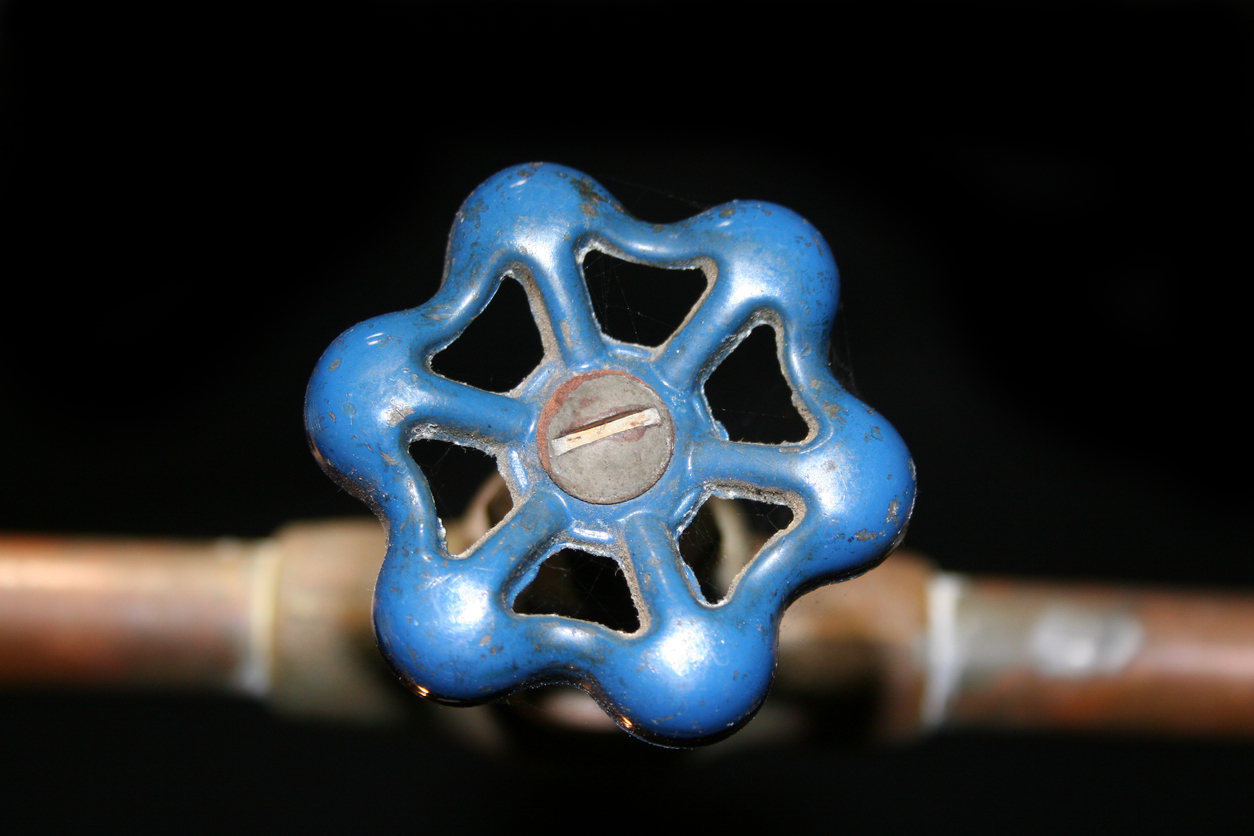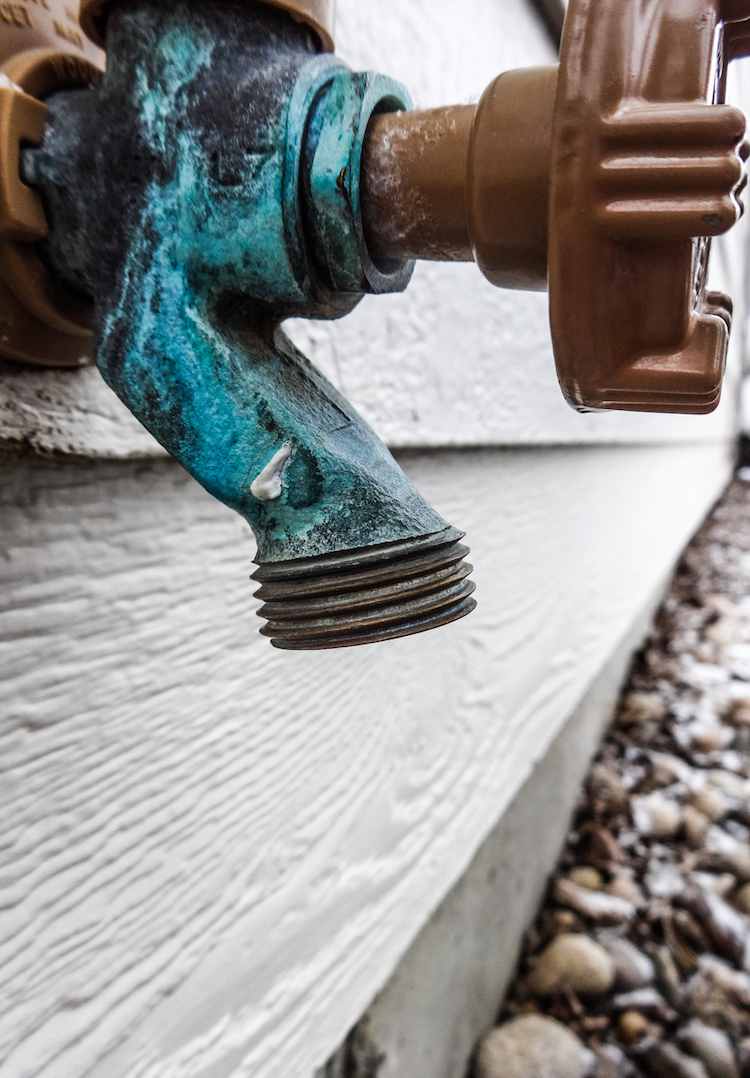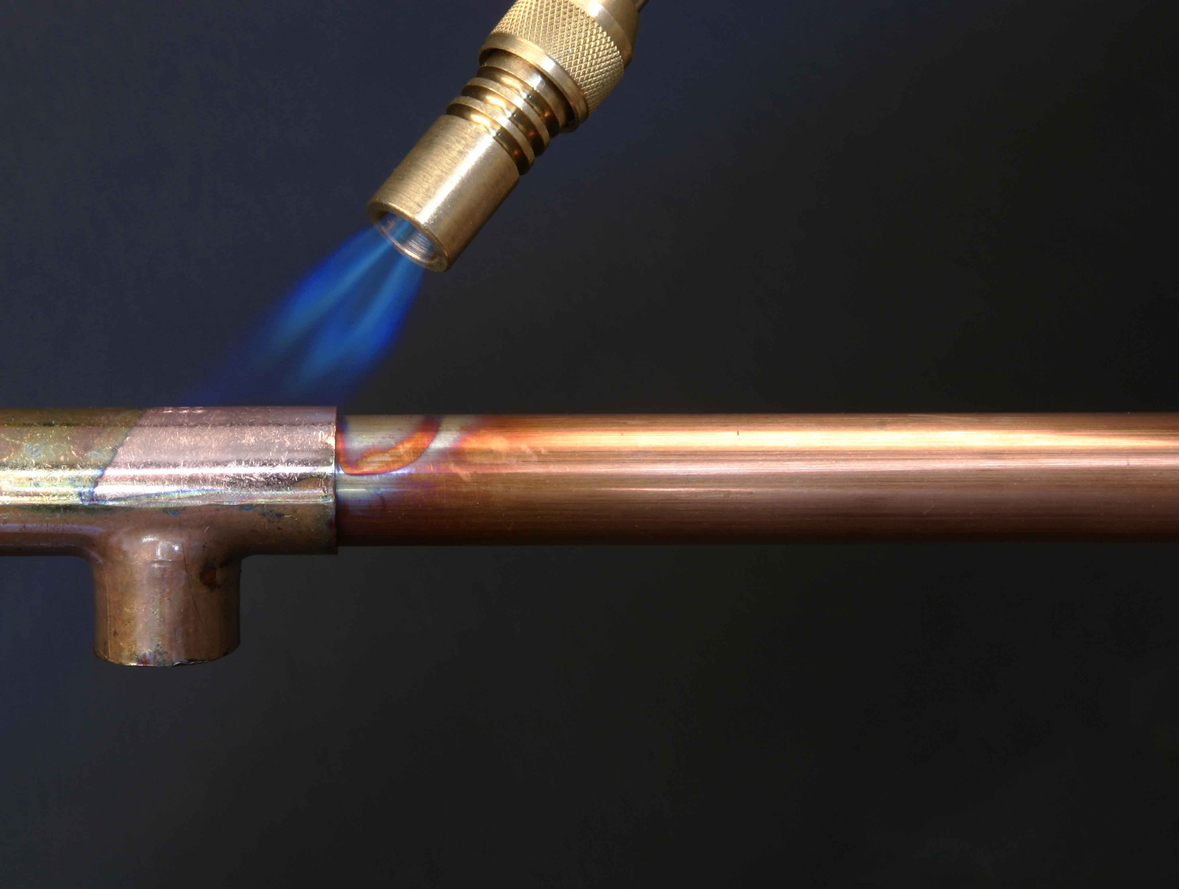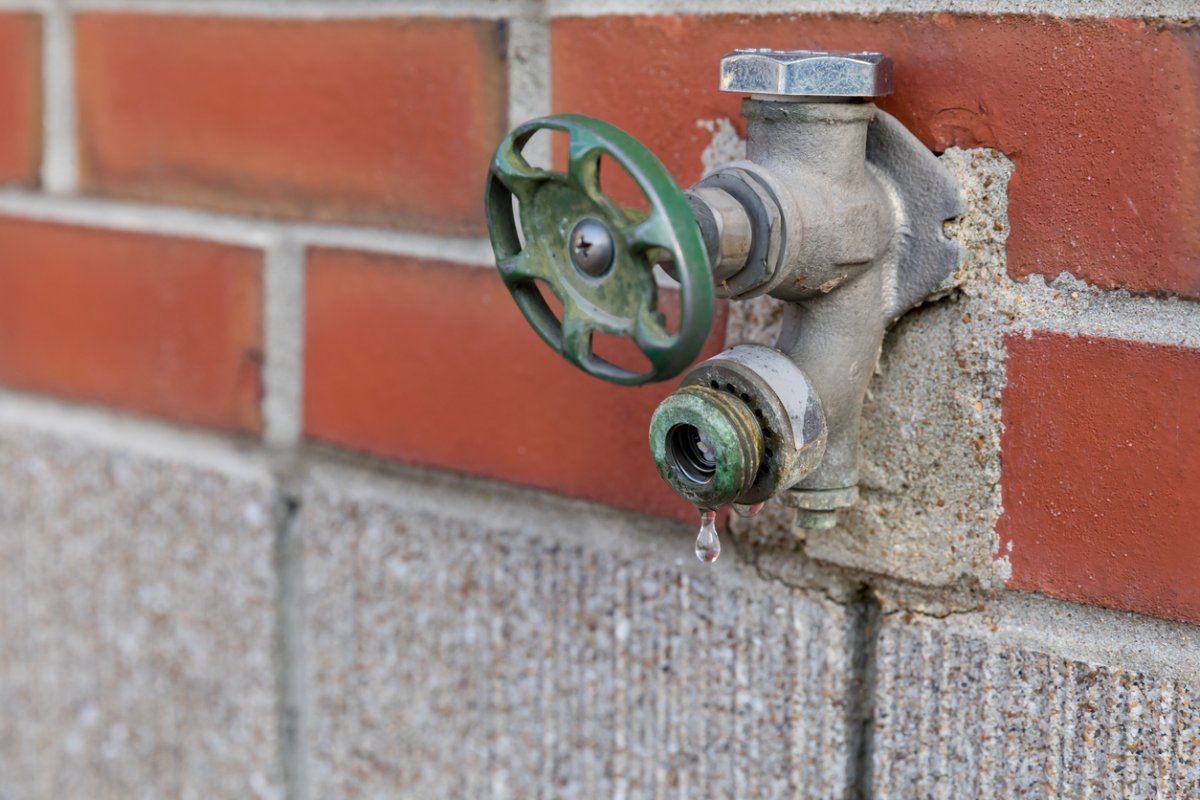We may earn revenue from the products available on this page and participate in affiliate programs. Learn More ›
Though a leaky outdoor faucet may not seem like much of a problem, each drip is costing you money. A faucet that drips once per second can waste up to 3,000 gallons of water in a single year, according to the Environmental Protection Agency. The costs to your bank account and to the environment are compelling reasons to replace that outdoor faucet.
While most outdoor faucets are made of sturdy stainless steel or brass that can resist the elements, they do have their Achilles heel in the form of a rubber washer that’s responsible for creating the watertight seal that prevents the faucet from dripping when the valve is closed.
Unfortunately, this rubber seal is susceptible to cracking if the water it’s holding back freezes. While replacing the rubber washer each time it fails is an option, a better solution is to replace the outdoor faucet with a frost-free outdoor faucet that keeps the washer and water in the line out of freezing temperatures. Frost-free faucets have a long stem that positions the rubber washer and water inside the home, as opposed to on the exterior of the wall, preventing the line from freezing in cold temperatures.
The good news is you don’t even need to be a licensed plumber to switch out the old faucet. A competent DIYer can complete the job with just a few specialty tools and plumbing supplies.
Tools & Materials
Bobvila.com may earn a commission from purchases made through these links.
- Pipe cutter
- Phillips head screwdriver
- Drill and masonry bit
- Tape measure
- 3/4-inch copper coupling
- Emery cloth
- Soldering torch
- Crescent wrench
- Frost-free outdoor faucet
- Concrete screws
- A few inches of plumbing pipe
- Flux
- Solder
- Plumber’s tape
Before You Begin
Before you get started, assess the plumbing you have in your home to determine the type of supplies you need by going into the basement or crawl space and looking at the water line that extends to the outdoor faucet. While this guide will focus on copper pipes, homes also can have PVC, galvanized, or PEX water lines. You’ll need to purchase materials that are compatible with your home’s plumbing.
STEP 1: Locate the shutoff valve and cut the water supply to the outside tap.
Locate the shutoff valve for the outdoor faucet, also known as a sillcock. First, look for a shutoff valve inside the home on the pipe that runs to the outdoor faucet and close it. If the outdoor faucet does not have a shutoff valve or you cannot locate it, you’ll need to find the main water shutoff for the entire home and close that valve. A main water valve is typically located on a front wall of a house, in a crawl space or basement for those who have them or a pantry or closet for homes on a slab. After you close the valve, open the lowest faucet in the house to drain any water left in the lines.

STEP 2: Inside the house, locate the water pipe leading to the outdoor faucet and cut it a few inches from the wall.
Before starting this step, make sure you have a bucket ready to catch any water left in the pipe. You’ll also need a simple and affordable tool called a pipe cutter to make the cut. This tool clamps around the pipe and has small wheels with sharp edges that push up against it. As you rotate the cutter around the pipe, the blades slowly cut through it. Continue turning the tool until you’ve cut completely through the line.

If you don’t have a pipe cutter on hand, it is possible to use a hacksaw to make this cut. However, a pipe cutter will create a cleaner, more precise cut, making it easier to connect the new faucet later.
STEP 3: Outside the house, remove the old faucet and test-fit the new outdoor faucet.
Remove any screws holding the old faucet to the side of the house, then slide it out of the hole. Insert the new outdoor faucet into the hole to check for fit. There should be a small gap between the supply line you just cut inside the home and the new sillcock.
You’ll need to add an adapter to the end of the sillcock to attach it to your home’s plumbing. Adapters come in a variety of types to suit copper, PVC, and PEX plumbing. One end of the adapter should screw into the sillcock, while the other end should fit into the home’s existing plumbing. When screwing the adapter into the new sillcock, wrap the adapter’s threads in plumber’s tape to ensure a watertight joint.
STEP 4: Install the new outdoor faucet, adding a generous amount of caulk between the faucet and home exterior.
Before caulking, you’ll need to drill pilot holes in the foundation so you can attach the faucet to the foundation. Hold the faucet in place and mark the concrete for the screw holes. Drill pilot holes into the concrete using a drill and a masonry bit. Apply caulking around the hole, then slide the new faucet’s stem into the hole and press the mounting plate into the caulk. The caulk will seal any gaps between the sillcock and the concrete, insulating the indoor space by preventing air from passing through. Use a screwdriver or power driver to attach the faucet to the foundation by driving two concrete screws through the mounting plate into the predrilled holes.
STEP 5: Remove the faucet stem before heading inside to solder the new sillcock to the existing water pipe.
Copper is an excellent heat conductor, so when you heat the sillcock and pipe with the soldering torch, it could cause the rubber washer inside the new outdoor faucet to melt. To prevent this from happening, unscrew the stem from the new sillcock and set it aside until the soldering is complete.
STEP 6: Measure and cut a piece of new pipe to connect the sillcock and coupling to the water pipe.
After the outside components are fitted, it’s time to connect the sillcock to the house’s plumbing. Use a tape measure to measure the gap between the cut end of the pipe and the adapter. Use that measurement to cut a new piece of copper pipe to fill the gap using your pipe cutter.
Related: 9 Cool Projects You Can Make with Pipe and Fittings

STEP 7: Clean and add flux to the pipe and fittings, then solder everything together.
Use emery cloth to clean any burs left on the cut ends of the existing pipe and the new piece of pipe. The emery cloth, which is essentially sandpaper with a cloth backing, will smooth the surface to ensure a tight connection when you solder the pieces together.
Next, add flux to the pipes, coupling, and adapter to clean away any oxidation on the copper, ensuring a stronger connection with the solder. Connect the pipes, coupling, and adapter extending from the new sillcock.
Put on eye protection and a pair of protective gloves, because soldering torches are capable of reaching temperatures of 3,600 degrees. It’s critical to take the necessary precautions to protect yourself from possible burns.
Light the torch, then solder the pieces together using a process that plumbers commonly refer to as sweating the pipes. Use a back and forth motion to heat the pipe evenly. Once the metal is hot, hold the solder against it and allow the solder to melt and flow into the joint, making sure the solder fills the joint around the entire connection.
STEP 8: Outside the house, reinstall the stem inside the new sillcock and tighten it in place.
After the inside pipe and fittings are set, the next step is securing the new sillcock. Thread the stem back onto the new faucet by hand, then use a crescent wrench to tighten the stem into place. Make sure not to overtighten the joint to avoid damaging the rubber gasket.

STEP 9: Turn the water back on and test the new outdoor faucet.
Turn the faucet on to make sure it’s working properly, then turn it off. Remember, since the washer that stops the water when the valve is closed is further back in the sillcock, it will take longer for the water to drain out of the faucet once you turn it off.
After the excess water has drained out of the faucet, check the connection inside as well as the connection between the stem and the new sillcock for leaks.
By using this method to replace your old sillcock with a frost-proof model, you’ll eliminate that costly leak while protecting your outdoor faucet from potentially damaging subfreezing temperatures.


